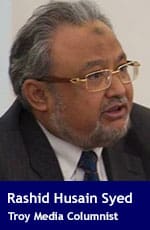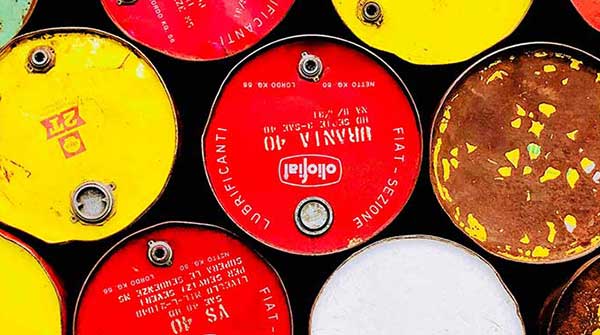Aramco decision to halt its oil capacity expansion raises questions about future crude demand
 This was a bombshell.
This was a bombshell.
Last Tuesday, the Saudi state oil giant Aramco announced that the energy ministry instructed it to halt plans to boost its maximum sustainable crude output capacity to 13 million barrels per day (bpd), returning to the previous 12 million bpd target. This was a complete reversal of Saudi energy policy.
Only last November, the world’s biggest oil exporter had said it was progressing “very well” with the multibillion-dollar project to boost capacity to 13 million barrels a day by 2027.
For the last few years, Saudi Arabia has strongly urged the industry to increase investments in upstream oil projects. Calling for investments in the oil and gas sector, Saudi Arabia has been arguing that fossil fuels will be part of the global energy mix for decades to come and that producers worldwide need to share that burden. In the absence of any new capacity, meeting the global energy needs would be difficult.
 |
| Related Stories |
| What to watch for in Canadian energy in 2024
|
| The sooner we face the realities of Not-Zero the better
|
| Russia overtakes Saudi Arabia as top oil supplier to China
|
Crown Prince Mohammed bin Salman, during U.S. President Joe Biden’s visit to the kingdom in July 2022, had warned that Riyadh “will not have any more capability to increase production” after it reached the now scrapped 13 million bpd goal, media reports then said.
Despite recent reports by the International Energy Agency (IEA) that global oil consumption is set to peak over the next few years, Aramco’s CEO, Ameen Nasser, has been unrelenting in underlining that the industry is underinvesting in new oil supply. Regardless of plausible scenarios, including the emergence of alternative energy, oil will continue to be needed for decades. Nasser has insisted that if fossil fuels are sidelined in the rush to green energy, there would be chaos in the energy markets. Fossil fuel would continue to play a dominant role in meeting the global energy demands for decades has been his mantra.
“The 100 million barrel system, because of lack of investment, is really fragile in terms of its ability to cope with any unforeseen interruptions,” Nasser told the Financial Times in 2022.
Does its decision to apply the brakes on its capacity expansion program mean that Riyadh is no longer as sure of the future crude demand scenario? While this question remains pertinent, Grant Smith, writing for Bloomberg, believes there are other reasons for the Saudi decision, including the rising output from several rival suppliers.
Thanks to the shale revolution, the United States is today the world’s largest crude oil producer, with its output touching the 13.3 million bpd mark last November. To add to the crude market woes, this deluge is being amplified by other producers, such as Brazil and the emerging oil play of Guyana. This means that despite several output cuts, oil prices have generally been staying between US$70 to US$80 a barrel. Saudi budgetary requirements are believed to be considerably above that. Meantime, despite sanctions, Iran’s oil exports have now hit a five-year high.
According to the Nikkei Asian Review, Iranian crude oil exports grew roughly 50 percent last year to about 1.29 million bpd, primarily directed to China. According to IEA estimates, Iran produced 2.99 million bpd in 2023, or 440,000 barrels more than its production in 2022. It now predicts that the Iranian output will increase by another 160,000 bpd in 2024.
Saudi energy managers must have been taking note of all these.
Furthermore, Saudi Arabia holds a lion’s share of the OPEC’s available 5.1 million bpd of spare capacity. The International Energy Agency estimates that 3.2 million bpd of this is held by Saudi Arabia alone. And these barrels are not being monetized because they don’t have many takers.
Another possible reason behind the Saudi decision could be why invest billions of dollars in a project that won’t yield significant returns, particularly in the near future. This reason becomes even more pertinent when Saudi economic managers are looking for ways to generate additional funds to cover government expenditures.
There is also a significant domestic aspect to this decision. Saudi Arabia is in need of a substantial amount of funding. Billions of dollars are required for Crown Prince Mohammad bin Salman’s pet projects, including NEOM, tourism, sports, and others. The challenge lies in securing the necessary financing, as Saudi Arabia currently lacks the resources to fund all these initiatives. Emirates NBD, a bank based in Dubai, estimates that Saudi Arabia might face a budget deficit of approximately $46 billion in 2024. The question remains: where will this funding come from?
That can only be generated if Aramco is squeezed further to pay higher dividends to the Saudi government – the 98 percent equity holder of Aramco. The company has already raised its quarterly payout to its major stakeholders by more than US$10 billion to US$29.4 billion over the previous two quarters.
Abandoning the 13 million bpd expansion should help ease the pressure on Aramco’s budget by trimming about US$5 billion a year from annual spending, according to RBC Capital Markets.
We can only conclude that the Saudi decision was based on sound reasoning.
Toronto-based Rashid Husain Syed is a highly-regarded analyst specializing in energy and politics, with a particular emphasis on the Middle East. Besides his contributions to both local and international newspapers, Rashid frequently lends his expertise as a speaker at global conferences. His insights on global energy matters have been sought after by organizations such as the Department of Energy in Washington and the International Energy Agency in Paris.
For interview requests, click here.
The opinions expressed by our columnists and contributors are theirs alone and do not inherently or expressly reflect the views of our publication.
© Troy Media
Troy Media is an editorial content provider to media outlets and its own hosted community news outlets across Canada.


